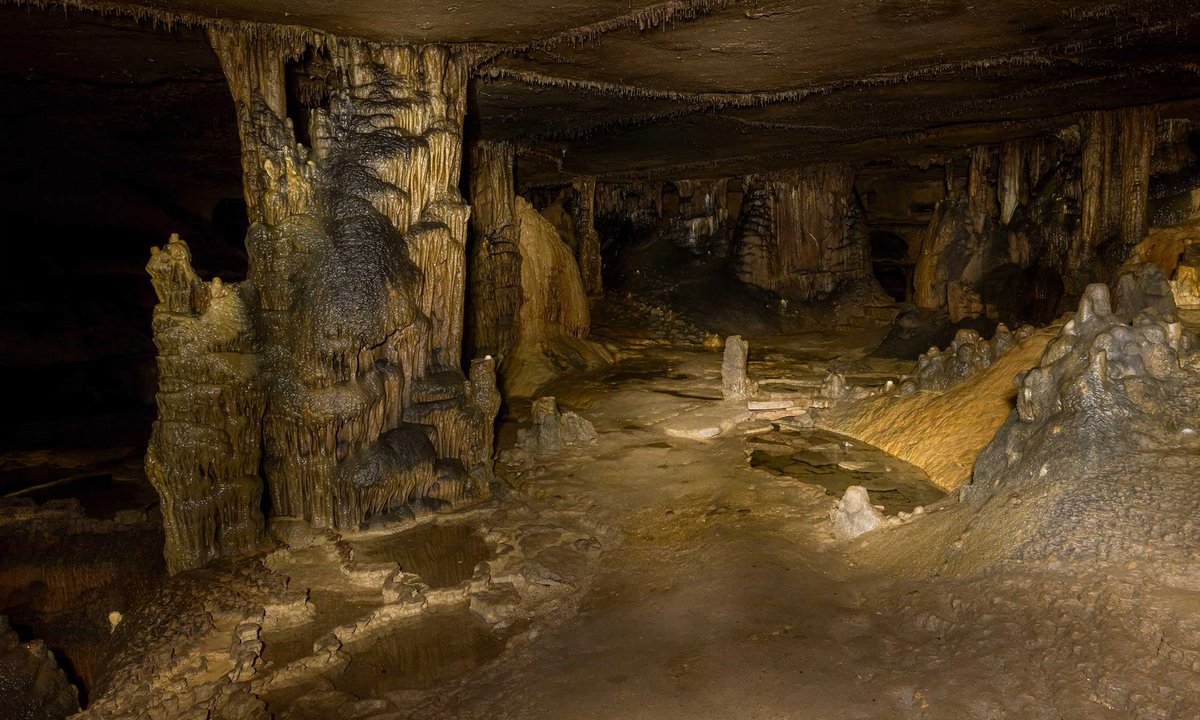
"Some of the oldest examples of cave art in the US are on the walls of Dunbar Cave in Clarksville, Tennessee-50 miles northwest of Nashville. Dating back around 800 years, these include petroglyphs carved into the limestone and pictographs drawn in charcoal that were identified in the early 2000s. Some have geometric, abstract forms-such as concentric circular shapes-while others feature human figures or possibly represent beings related to spiritual practice. The cave is believed to have been a sacred space for Indigenous people during the Mississippian period, spanning from roughly 500 to 1,000 years ago. Archaeological studies have revealed signs that the use of the cave by humans goes back even further-taking place over tens of thousands of years-from traces of the extraction of its mineral resources to evidence of the care of the dead. The cave, stretching eight miles underground, is now part of Dunbar Cave State Park."
"In February, severe flooding from heavy rains completely submerged the cave art. Dunbar Cave State Park officials stated that it was the highest flooding in the cave on record, "several feet higher" than another major flood in 2010 and "the third such event in less than one year". Images they posted online showed the aftermath: mud was caked on all sides of the cave, including the ceiling, with several bats found drowned. Restoration of the site's damaged infrastructure is now underway in order to reopen the cave for public tours. Meanwhile, archaeologists have been assessing any damage to the cave art, as this was the first recorded time it had been completely covered during a flood."
"According to information shared by the Tennessee Department of Environment and Conservation (TDEC), its Division of Archaeology (TDOA) has compared high-resolution photographs that were taken of the art in 2014 to those taken after the flooding. This analysis showed"
Dunbar Cave in Clarksville, Tennessee contains cave art dating around 800 years, including limestone petroglyphs and charcoal pictographs with geometric and human forms. The site served as a sacred space during the Mississippian period and shows archaeological evidence of much older human activity, including mineral extraction and care of the dead. The cave extends roughly eight miles underground and is part of Dunbar Cave State Park. Severe February flooding completely submerged the art, produced heavy mud and drowned bats, and led to infrastructure restoration and archaeologists comparing pre- and post-flood high-resolution photographs to assess damage.
Read at The Art Newspaper - International art news and events
Unable to calculate read time
Collection
[
|
...
]